Author: Marshall Schott
Lager beer comes in all shapes and sizes. While the most popular versions tend to be pale with humble levels of alcohol, there are some that fall far outside this stereotype, designed less for massive consumption on warm summer days, but rather as a means of warming oneself up during the icy months of winter. As a resident of Central California, I complain when the temperature drops below 50°F/10°C and am largely unfamiliar with the seemingly unbearable cold folks living in other regions put up with, places such as the Baltic region of Eastern Europe.
Baltic Porter, as the name suggests, is a style that was inspired in part by the Porter that was being produced in 18th century England, as well as the strong Imperial Stout coming out of Russia. While some records suggest it was initially made with top-fermenting ale yeasts, Baltic brewers began using lager strains such that they could more easily integrate the style into their typical brewing schedules. The BJCP provides the following description:
A Baltic Porter often has the malt flavors reminiscent of an English Porter and the restrained roast of a Schwarzbier, but with a higher OG and alcohol content than either. Very complex, with multi-layered malt and dark fruit flavors.
I don’t make many high ABV beers, but I certainly love me a good Porter and Schwarzbier. Inspired by my wife’s Latvian roots as well as the fact I’d never made a Baltic Porter myself, I figured I’d see what I could get away with brewing one using profane processes.
| BREWING THE BEER |
I’d never made a Baltic Porter and wasn’t terribly certain how to approach designing a recipe, so I ended up going with something I felt would work. Once together, I compared it to a couple recipes I found online and it seemed consistent enough, so it stuck.
Short & Shoddy Baltic Porter
Recipe Details
| Batch Size | Boil Time | IBU | SRM | Est. OG | Est. FG | ABV |
|---|---|---|---|---|---|---|
| 5.2 gal | 30 min | 29.6 IBUs | 30.1 SRM | 1.065 | 1.016 | 6.4 % |
| Actuals | 1.065 | 1.013 | 6.9 % | |||
Fermentables
| Name | Amount | % |
|---|---|---|
| Metolius Munich-style Malt (Mecca Grade) | 6 lbs | 32.88 |
| Vanora Vienna-style Malt (Mecca Grade) | 6 lbs | 32.88 |
| Pelton Pilsner-style Malt (Mecca Grade) | 5 lbs | 27.4 |
| Crystal Malt - 60L (Thomas Fawcett) | 12 oz | 4.11 |
| Roasted Barley (Bairds) | 8 oz | 2.74 |
Hops
| Name | Amount | Time | Use | Form | Alpha % |
|---|---|---|---|---|---|
| Hallertauer Mittelfrueh | 21 g | 30 min | First Wort | Pellet | 2.3 |
| Magnum | 20 g | 30 min | First Wort | Pellet | 12.9 |
Yeast
| Name | Lab | Attenuation | Temperature |
|---|---|---|---|
| Urkel (L28) | Imperial Yeast | 73% | 52°F - 58°F |
Notes
| Water Profile: Filtered Fresno tap water with some gypsum |
Download
| Download this recipe's BeerXML file |
I started this brew day at 9:12 AM by collecting the full volume of water.
After flipping the switch to get the water heating up, I added an unmeasured dose of gypsum in hopes of increasing the impression of crispness in the finished beer.
I then moved to grain preparation. Having used up all of my dehusked roasted grains, a common ingredient in Baltic Porter, I went with what I had on hand– English Roasted Barley.
With all the grain weighed out, I milled it directly into a BIAB fabric filter.
Once the water was properly heated, I stirred the grains in before checking the mash temperature.
The very full mash sat for a short 30 minutes, getting stirred every time I walked by.
During the mash rest, I measured out the kettle hop additions.
With the short mash rest complete, I removed the grains, which was no small feat given the amount required to achieve my target OG. Once the wort reached a boil, I set a timer for a mere 20 minutes and added hops at the times stated in the recipe.
When the boil was complete, I quickly chilled the wort with my IC.
A refractometer reading showed the wort hit a respectable 1.065 OG.
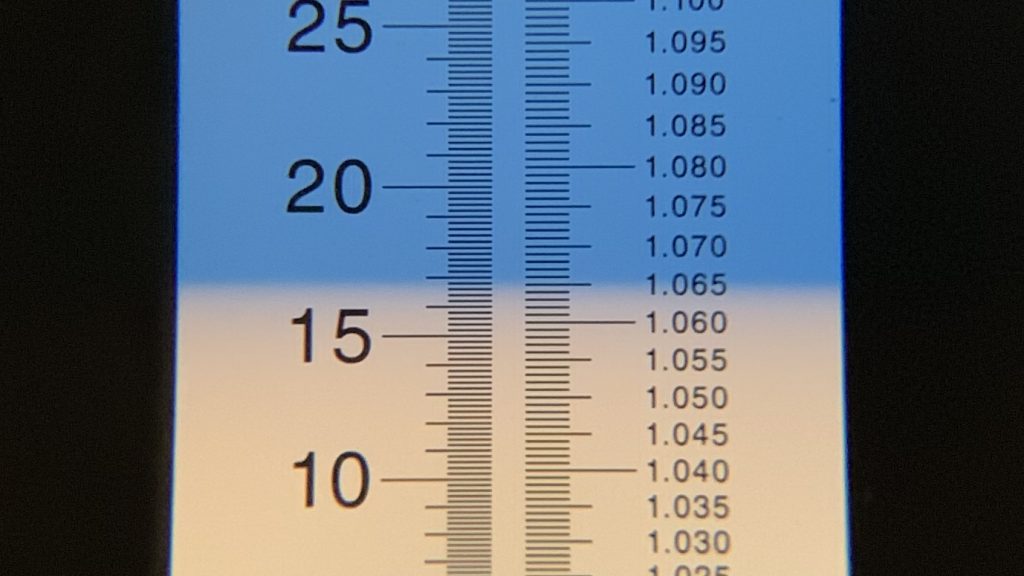
Having recently kegged a Short & Shoddy Märzen that had been racked onto an Imperial Yeast L28 Urkel cake that previously used to ferment a Short & Shoddy International Pale Lager, I figured I’d go for gold and use the yeast cake a third time.
While the yeast cake had been sitting in my 50°F/10°C chamber for a few days, the wort was rather warm when I racked it over, leading to an effective pitching temperature of about 71°F/22°C.
The filled fermentation vessel was placed back in my chamber controlled to 66°F/19°C and hooked up my CO2 capture device. The time was 11:08 AM for a total brew day time of 1 hour 56 minutes.
Fermentation kicked off within a couple hours and proceeded very actively for the following few days. Noticing an absence of observable activity at 5 days post-pitch, I took a hydrometer measurement confirming FG had been reached.
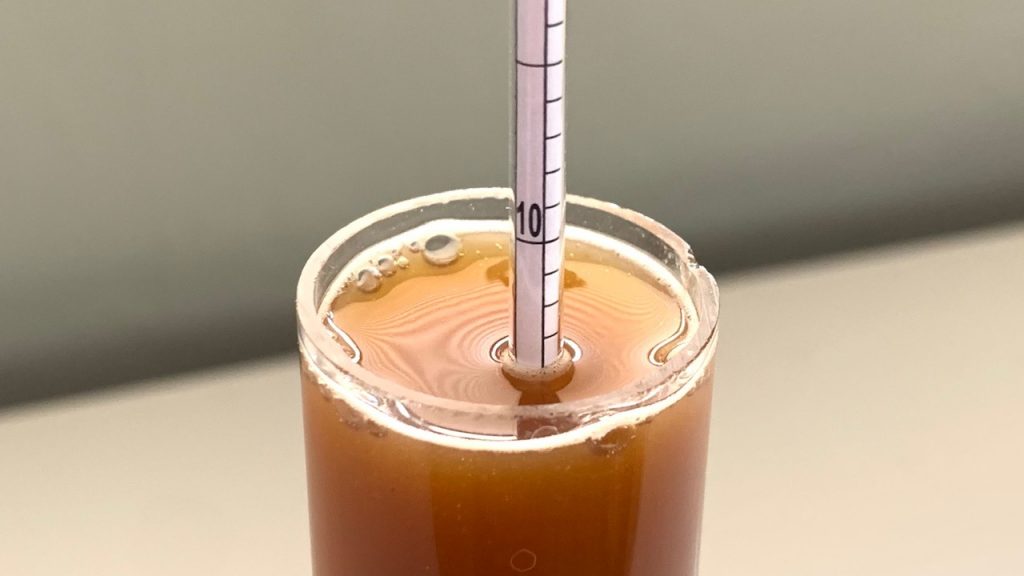
I let the beer sit another 2 days before confirming no change in FG, after which I hit the fermenter with 2 psi of CO2 and reduced the temperature in the chamber to 33°F/1°C for cold crashing. The next morning, I added gelatin fining then waited 5 more days before racking the beer to a naturally purged keg. The filled keg was placed in my keezer and burst carbonated overnight before I reduced the gas to serving pressure. I let the beer condition for just 6 days before serving it to tasters for evaluation.
| RESULTS |
A total of 21 people of various levels of experience participated in this Short & Shoddy evaluation. Participants were informed of the specific beer style and provided the BJCP description prior to completing the survey. Tasters were then instructed to rate how hoppy, malty, and dry they perceived the beer to be on a 0-5 scale where a rating of 0 indicated “not at all” and 5 indicated “extremely.”
Tasters were provided a list of common hop, malt, and yeast characteristics then instructed to select from each the one they perceived as being most prominent in the beer.
Hop Characteristics
Malt Characteristics
Yeast Characteristics
Next, participants were asked to indicate whether or not they detected any off-flavors in the beer; those who did were provided a list of common off-flavors and instructed to select the one they perceived as being strongest. Just one person noted what they perceived to be an oxidized off-flavor.
Tasters were then asked to rate how well the beer represented the intended style, based on the provided BJCP description, on a 0-5 scale where 0 meant “not at all” and 5 meant “exactly.”
Finally, tasters were asked to rate how much they enjoyed the beer on a 0-5 scale where 0 indicated they hated it and 5 indicated they loved it.
My Impressions: Prior to this batch, I’d never made a Baltic Porter before, but I’ve tried many over the years. To me, the best versions offer the right balance of roasty Porter flavor with the classic crisp drinkability of a lager. I hate to pat my own back, but I truly feel I nailed it with this Short & Shoddy Baltic Porter. Dark German lagers are some of my favorite styles, and to my palate, this Baltic Porter was like an imperial version of my go-to Schwarzbier. So good!
| CONCLUSION |
What do you get when you mix a crisp lager with a strong-ish Porter and some god-awful brewing methods? Based on my personal impressions, one damn tasty beer, and it would appear a good chunk of tasters would agree. This being the first Baltic Porter I’ve brewed, I wasn’t entirely sure what to expect and was pleased with the fact it came out tasting more or less how I expected, which was quite similar to commercial examples I’ve sampled.
In addition to being a lager with a dark color, Baltic Porter is known for possessing a relatively high amount of alcohol, which this Short & Shoddy version certainly accomplished. While it’s entirely possible those tasters who noted esters as being the most prominent yeast character were accurate, as the beer was fermented at ale temperature after all, I can’t help but wonder the extent to which the higher ABV influenced their perceptions. Personally, I perceived the fermentation character as being remarkably clean, and while I did detect some very slight whispers of fruit in the background, I didn’t think it was out-of-style at all.
In considering the Short & Shoddy approach used to make this beer, I’m not convinced it had much of a negative impact at all. Baltic Porter is a style many folks are unfamiliar with, and even so, most tasters seemed to think this version decently represented the BJCP description. While I tend to favor less potent styles for daily consumption, I’ll definitely be brewing more Baltic Porter in the future and think it’s perfect for those cooler winter months.
If you have thoughts about this Short & Shoddy brew, please feel free to share it in the comments section below!
Support Brülosophy In Style!
All designs are available in various colors and sizes on Amazon!
Follow Brülosophy on:
FACEBOOK | TWITTER | INSTAGRAM
If you enjoy this stuff and feel compelled to support Brulosophy.com, please check out the Support page for details on how you can very easily do so. Thanks!


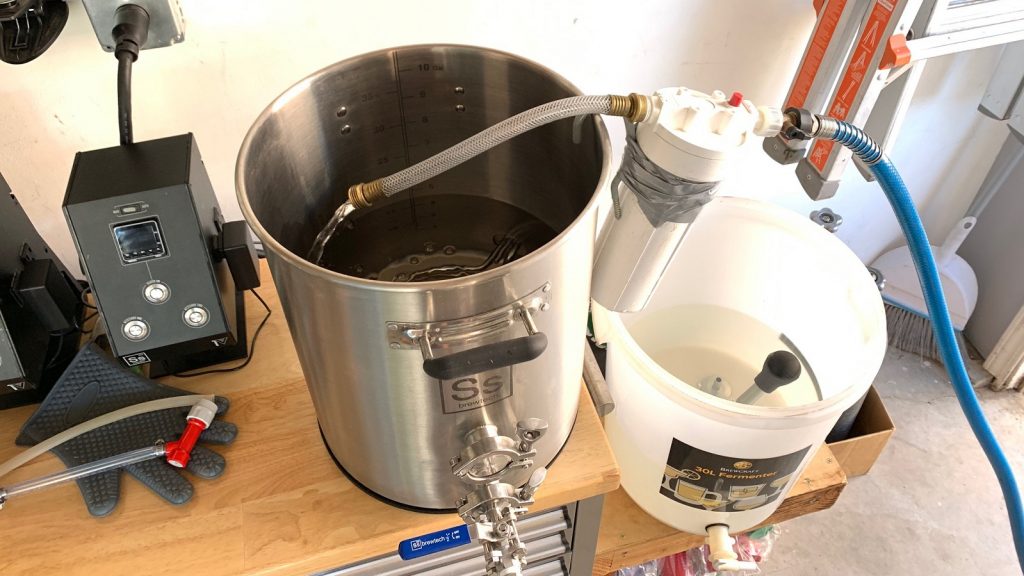
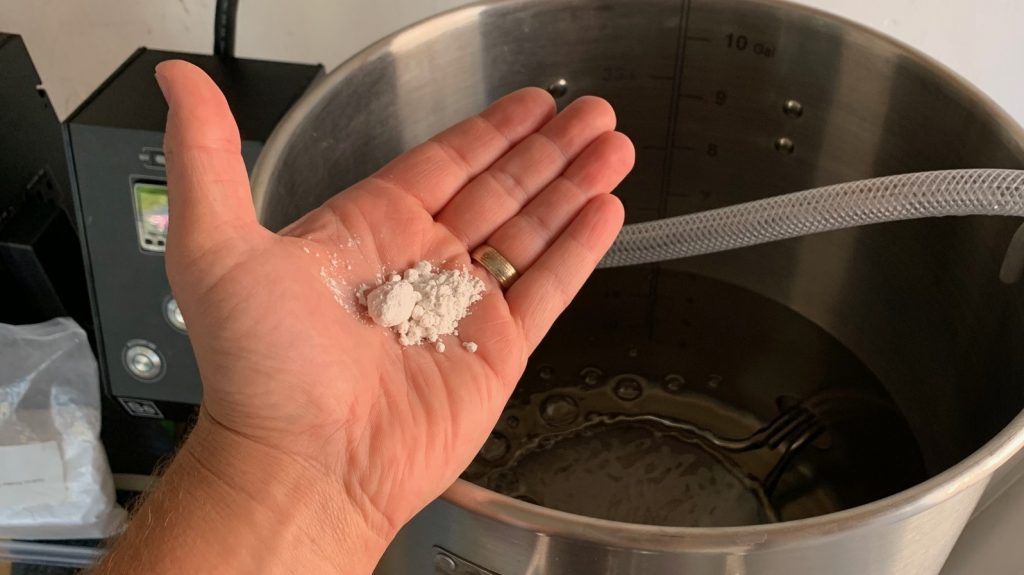
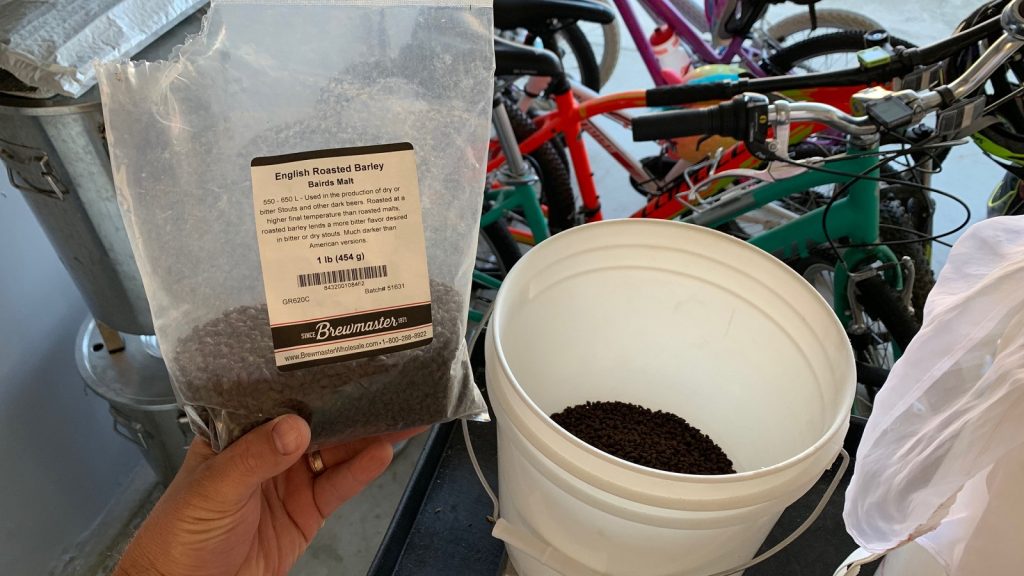
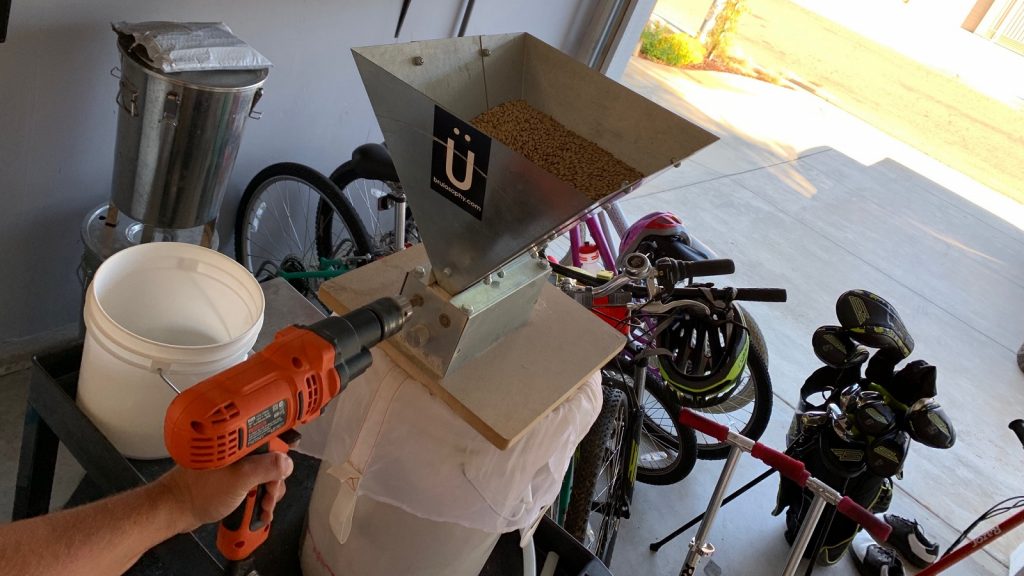
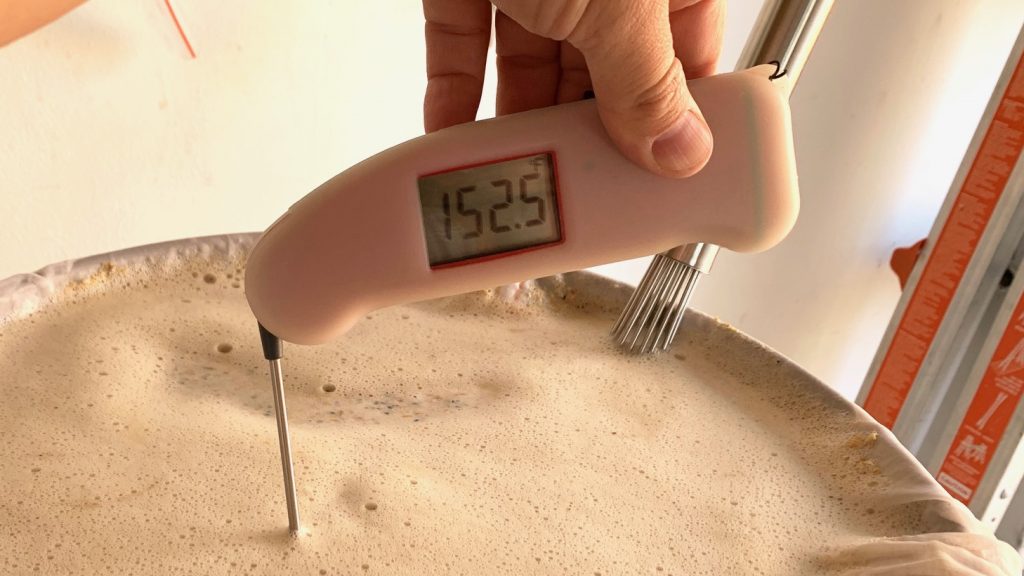
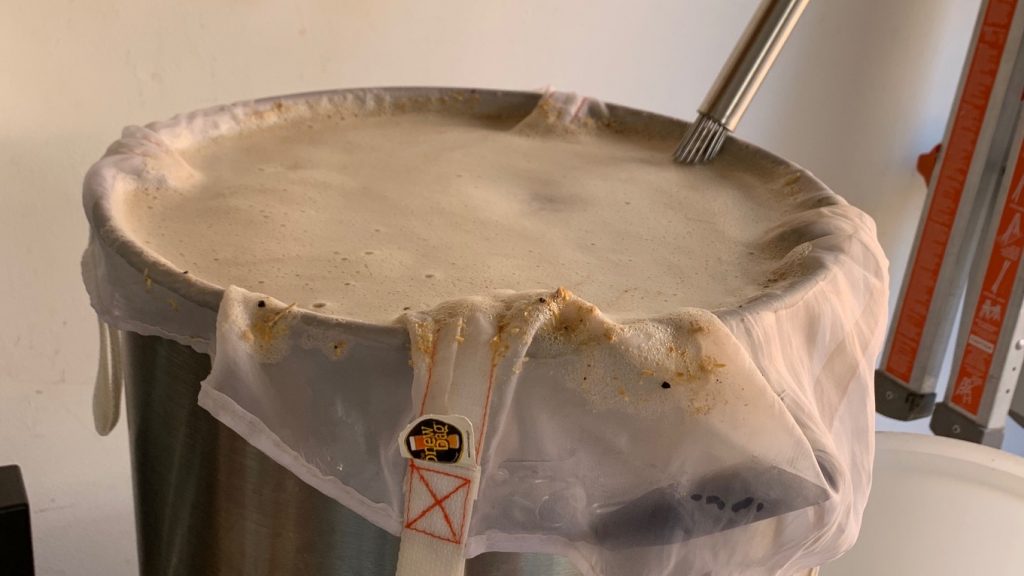
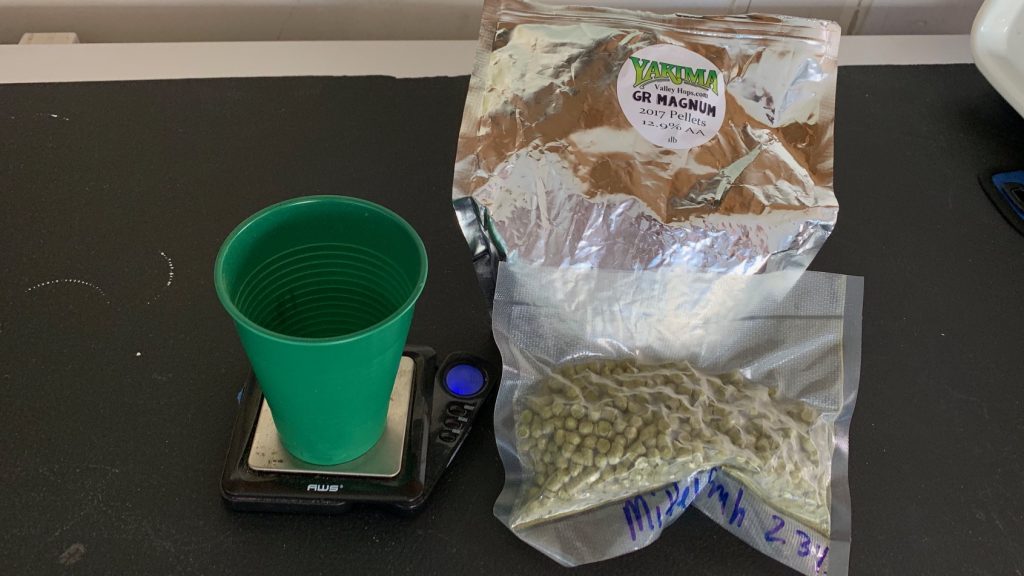
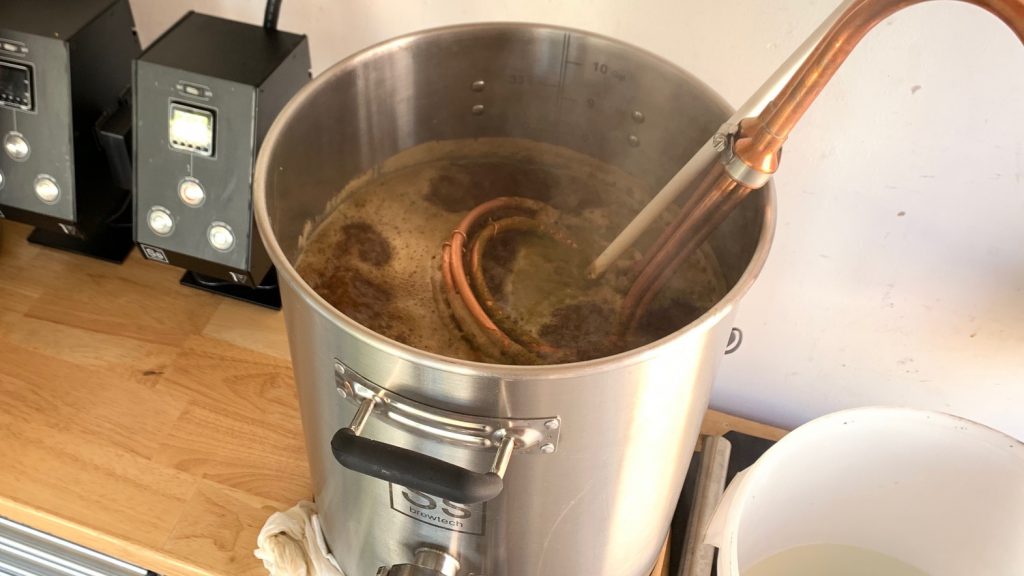
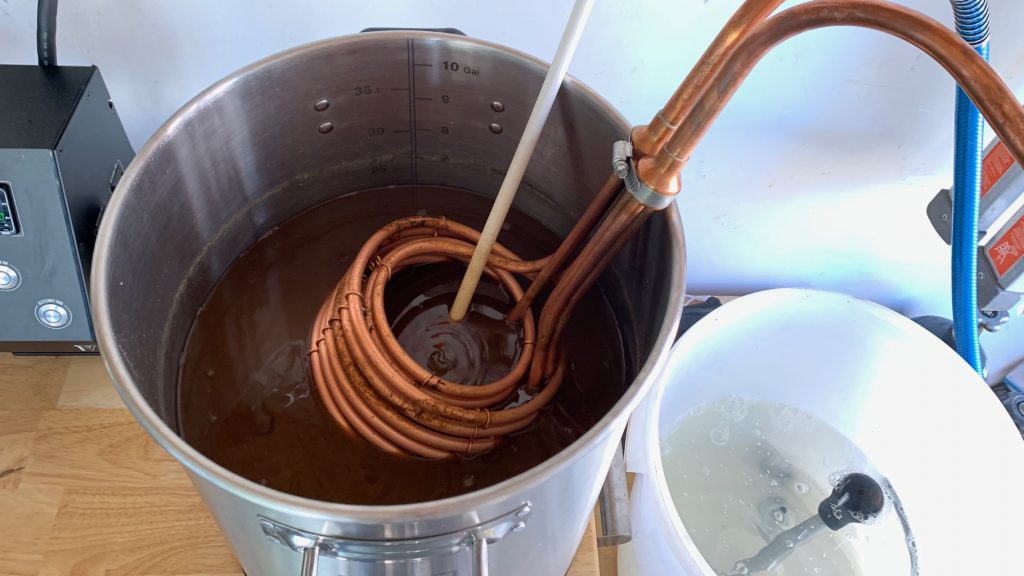
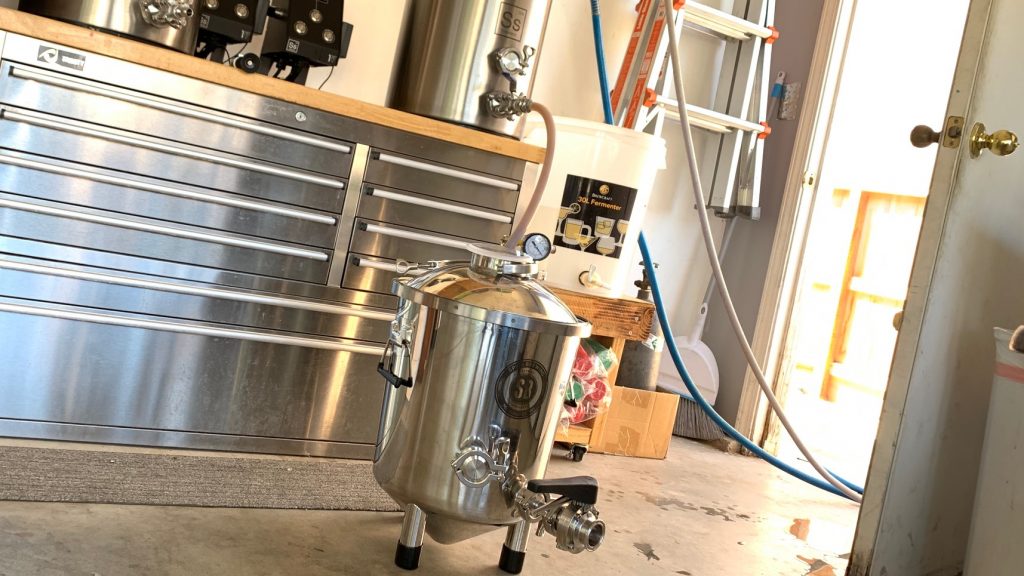
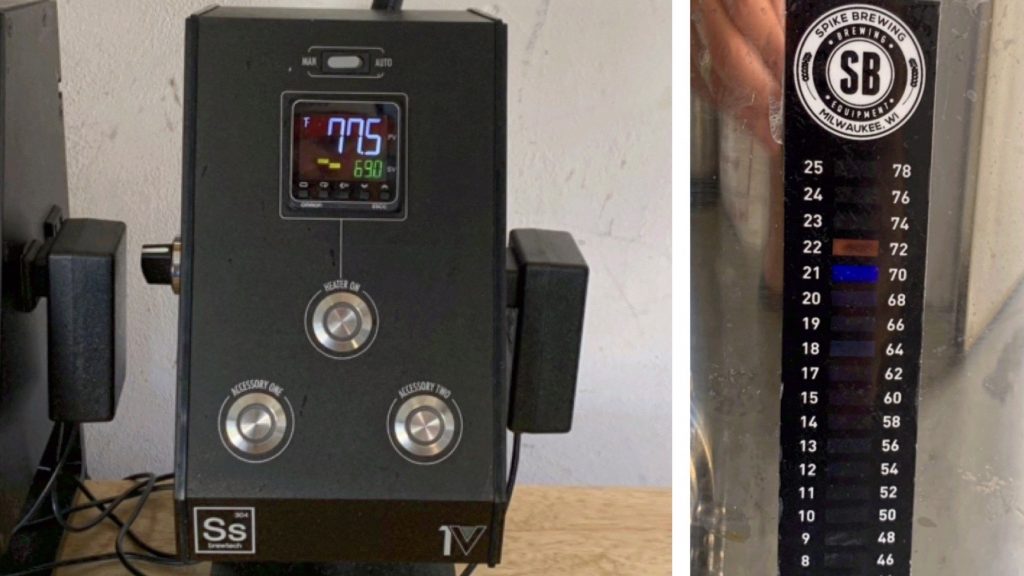
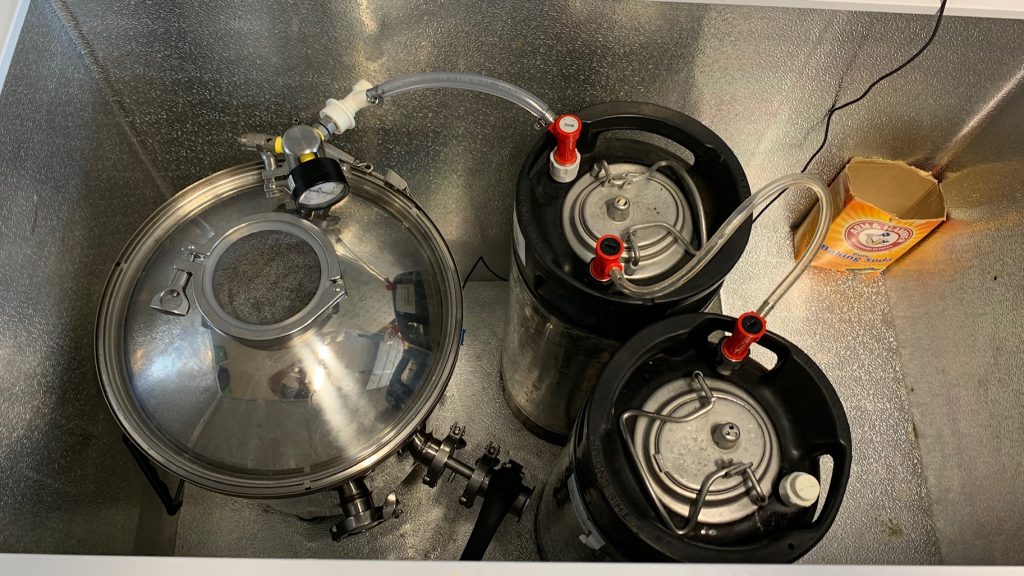
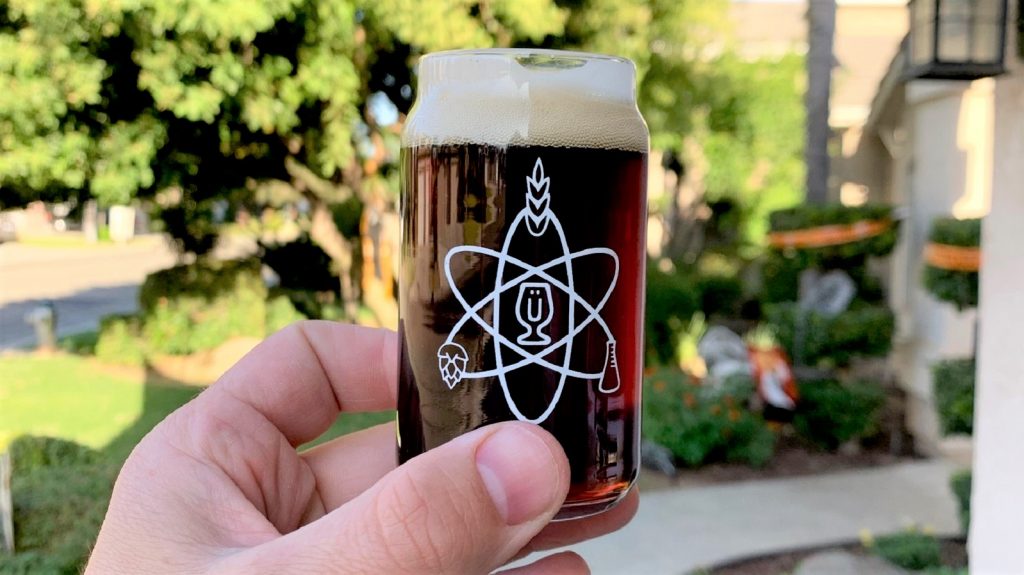
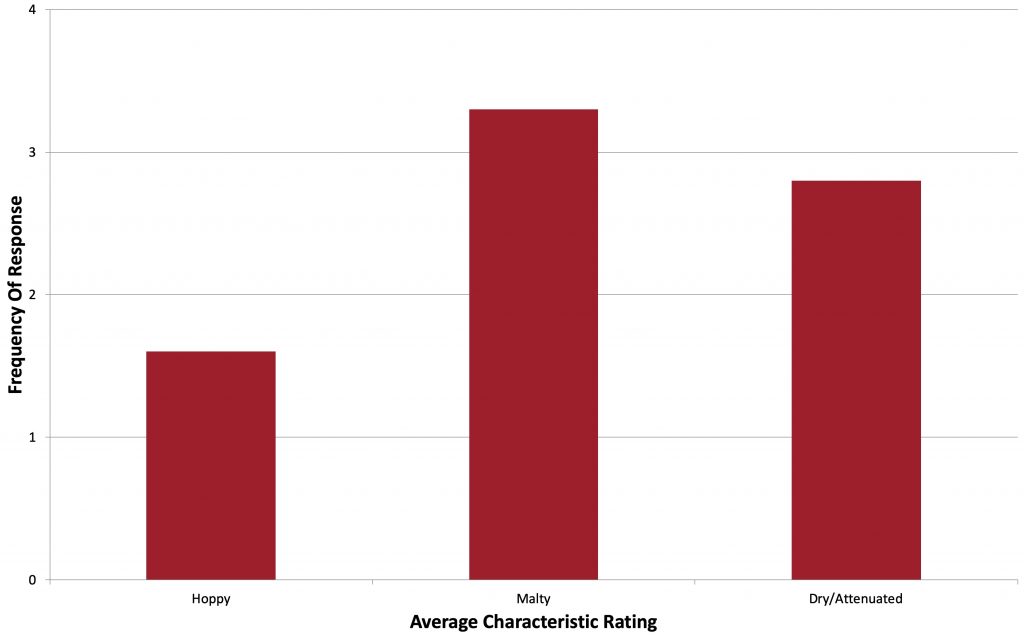
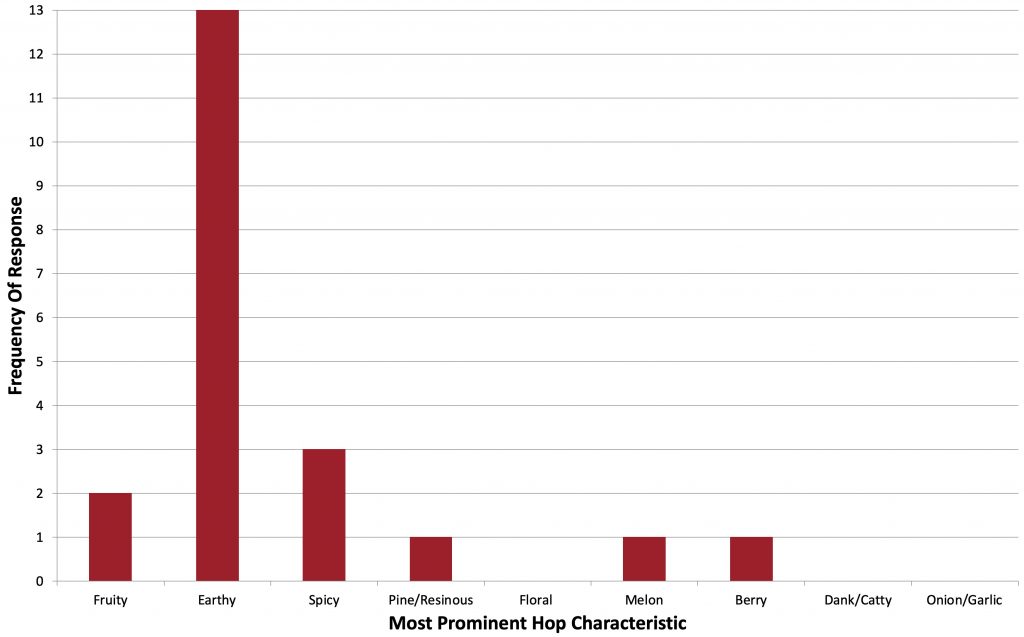
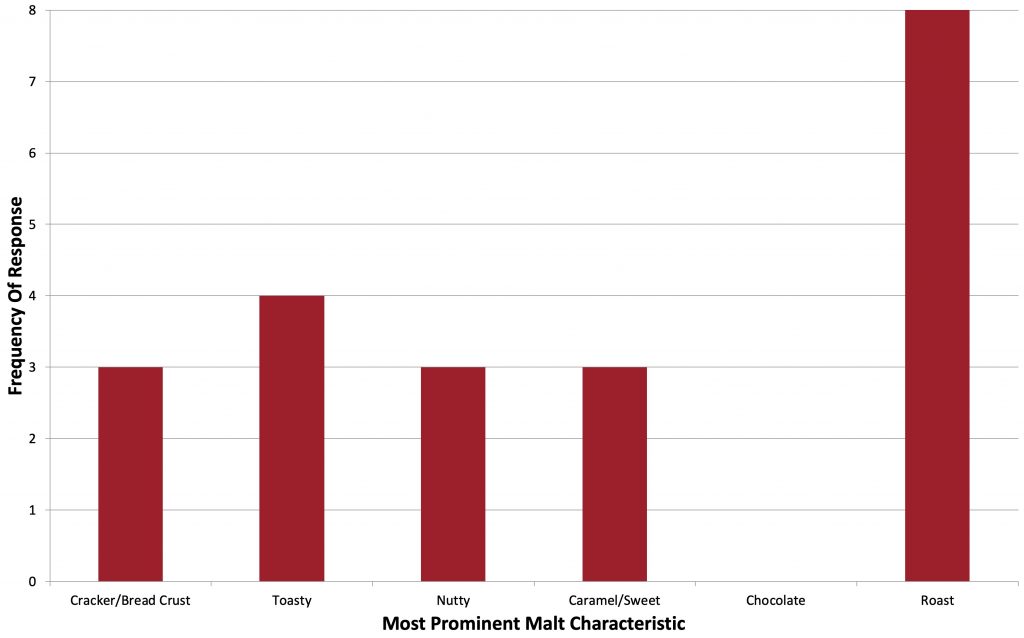
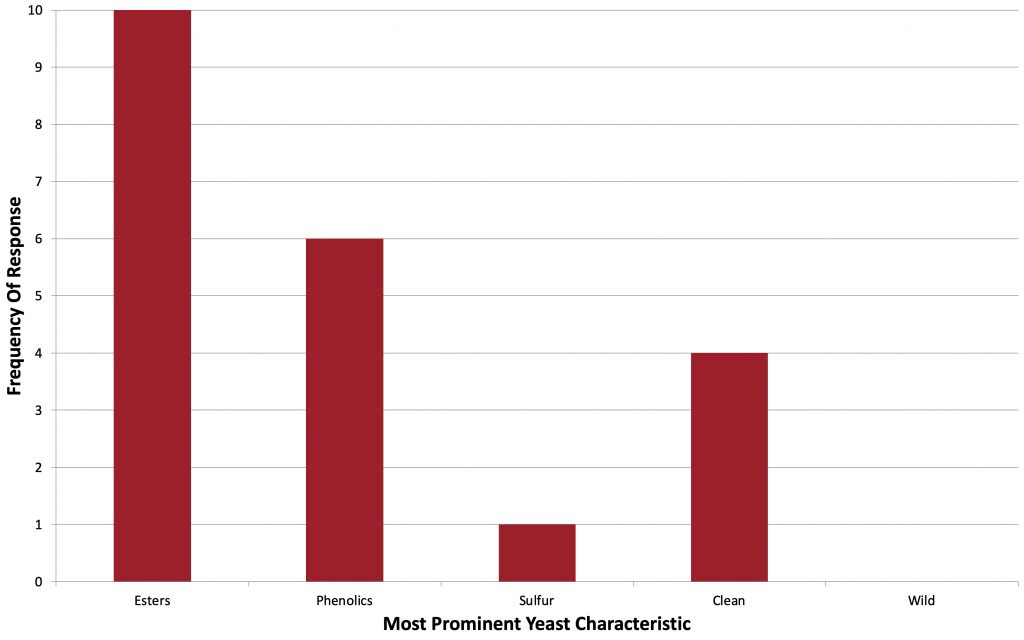
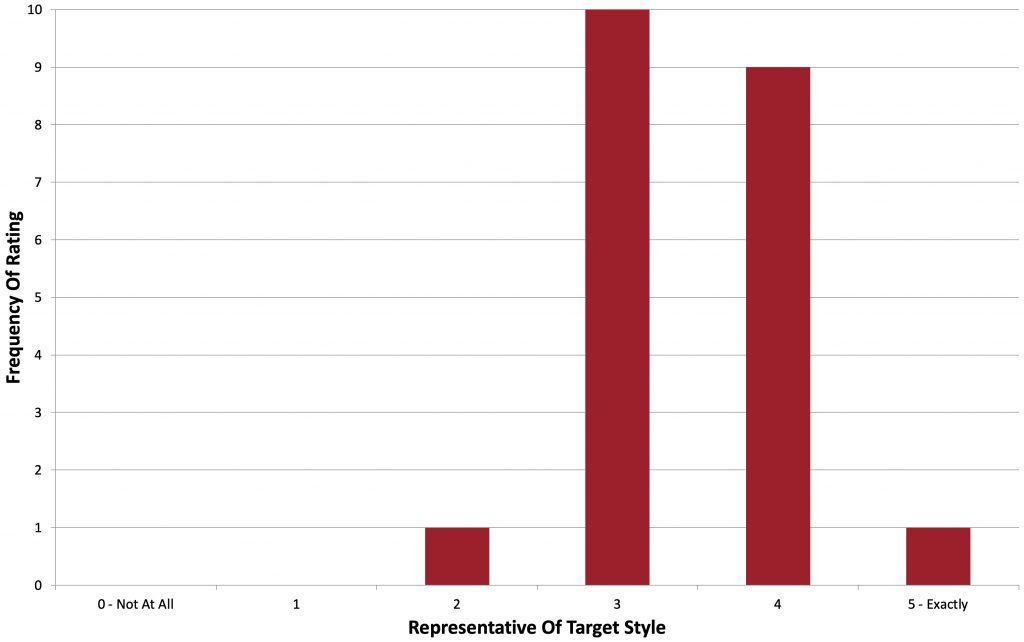
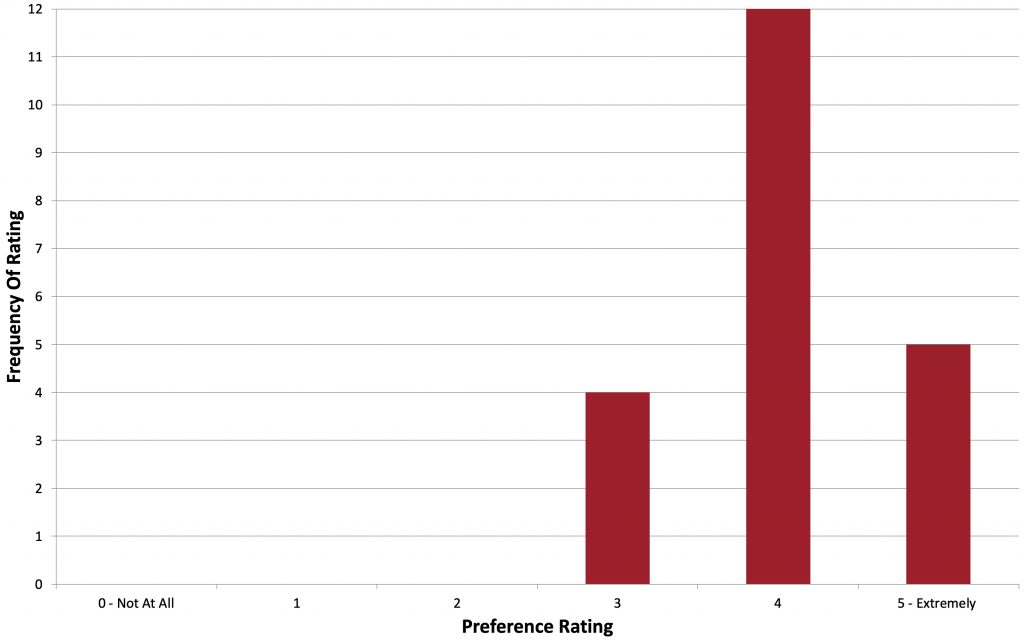










15 thoughts on “Short & Shoddy | Baltic Porter”
Atta boy! Beer looks great, glad it came out well. You’re right that they normally pack some Carafa 2, and I like some dark Munich as well, to accentuate the malty roast character, without adding too much bitterness. Prost!
Hi Marshall. I was wondering if you could share some more info about your keg CO2 capturing method? This looks like an update from your normal BruLoon device. Thanks!
I second that request. I see two kegs with a jumper and some grey cap on the last keg. Please tell us what you got there.
They cover this in pretty good detail in the podcast: Episode 093 | exBEERience: Reducing Cold-Side Oxidation. I’ve been meaning to try this.
I’m somewhat confused by the tasters’ feedback. Ten tasters describe the yeast character as ester-y, six thought it was phenolic (!), only four chose ‘clean’, yet most tasters seemed to find the beer representative of the style … ?! I haven’t had a lot of BPs, but imho a clean yeast character is rather essential (else you might as well strike the ‘Baltic’). But hey, as long as they enjoyed it.
“…yet most tasters seemed to find the beer representative of the style”
The mode for the “representative of the style” is 3 on a scale of 1-5, and only 1 taster said it perfectly represented the style. Based on that, I would say the tasters in general thought it somewhat represented the style as described in the BJCP.
Splendid! This didn’t make the list over at
https://brulosophy.com/projects/short-shoddy/
Cheers!
I’ve brewed one of this style once. I might have been concerned that the roasted barley would push the roast level out of style, but it sounds like you don’t think it did. For dark beers with subdued roast, I’ve played around with cold steeping part of my roasted malts when I don’t have dehusked versions on hand to try for a milder roast level. But that’s not the short and shoddy way, and you guys probably have an experiment that suggests cold steeping doesn’t matter.
Wow! I was nervous FOR you pulling 18 lbs out of a hot kettle that was a full “rim shot” !!! Lol That would add 3 yrs to my life! Well done and it looks delicious as confirmed by you and your taste panel.
Those are a lot of folks who listed phenolics as an attribute but you listed the profile as pretty clean. Any thoughts as to why? It’s not a necessarily high alcohol beer either….
Apart from what crap BJCP says, in Europe 1.065 SG beer is a bock. Brewer calling it a baltic porter would be ridiculed. In Poland, baltic porter starts at about 1.075 (and at this gravity is considered watery) and to be true it should be ~1.092.
Hi. I love these articles, and this brew sounds great, so I’m planning to try the recipe. But I’m not sure about timing of hops. It says First Wort, which I thought was very beginning as bringing wort up to boil. But then it says 30 minutes, which from the way I’ve seen other recipes set out is time from end of boil. Sorry stupid question, but please can you clarify? Thanks and cheers.
Toss hops in while brining it up to a boil, then only boil for 30 minutes.
Thank you Marshall, that’s very helpful. Cheers!
Wuau! I will follow the recipe for sure 🙂 The resting period in the keg was only 6 days? This encourages me to brew it, I am not as patient to wait few months …
Thank you for your great work